The week at a glance
- Franklin's Gull in Ayrshire
- Ivory Gull in the Outer Hebrides
- Possible Yelkouan Shearwaters in Cornwall
The week provided a rather stormy spell of weather, particularly across western coasts, and the overnight Shipping Forecast for 17th indicated winds of up to hurricane force 12 for sea area Fair Isle. A look at the synoptic chart saw a dense swathe of low pressure lines extending almost the width of the Atlantic, from the Outer Hebrides to Nova Scotia, and it was no surprise to see at least one new Nearctic visitor hit the Scottish west coast.
The bird in question was the first-winter Franklin's Gull found at Barassie (Ayrshire) on 16th and seen each evening there to 18th at least. This was only the second record for the county. The first was a first-summer bird (immortalised in A Twitcher's Diary) at Irvine in July 1980, when this species was still very much a mega: this was Scotland's first and only the fifth British record. Also in Scotland, out on North Uist in the Outer Hebrides, an adult Ivory Gull was found at Carnach on 21st. It is over nine years since the last Ivory Gull on the islands (a first-winter on Lewis in January 2000), while the last adult Ivory Gulls were seen in February 2002, in two Welsh counties and Lancashire.
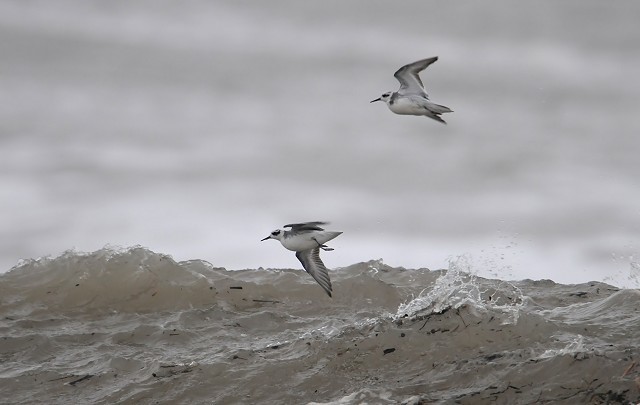
Grey Phalarope, Aberystwyth, Ceredigion (Photo: Kev Joynes)
The stormy weather conditions churned up a few seabirds during the week and off St. Ives (Cornwall) on 18th two possible Yelkouan Shearwaters were seen heading westwards. Who knows the true status of the species in British waters, but as yet, it doesn't have a place on the British List. A number of Balearic Shearwaters were seen in ones and twos off the south coast this week and at least 10 were seen from St. Ives (Cornwall) on 18th. As with last week, a handful of Pomarine Skuas were reported, while up to 40 storm-blown Grey Phalaropes included three off the seafront at Aberystwyth (Ceredigion), four off the pier at Liscannor (Co. Clare) and five at Marazion (Cornwall) all on 17th. Later in the week, four birds were seen off Gunwalloe (Cornwall) on 20th. Most birds were seen in the far southwest or along the Welsh coast, but one made it to Cheddar Reservoir (Somerset), again on 17th, while one was still at Filey (North Yorkshire) to 20th at least. A Little Auk flew past Clifden (Co. Galway) on 19th with further singles at Ballycotton (Co. Cork) and in the Carrick Roads (Cornwall), both on 21st.
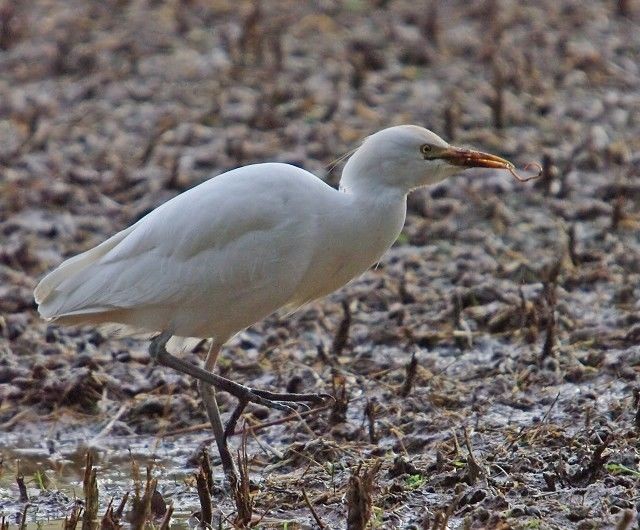
Cattle Egret, Powderham, Devon (Photo: Charlie Fleming)
A rather obliging Cattle Egret remained on St. Mary's (Scilly) this week to 21st, while in Cornwall up to four birds were seen around the Sennen area to 18th and five were at Veryan on 16th. Further Cornish birds were two at St. Breock Downs on 18th–19th and three still around the Gannel Estuary on 20th. Next door in Devon, up to three birds were seen around the Exe Estuary, at Powderham to 21st, and up to four birds were still around the Kingsbridge Estuary to 19th (one still present on 21st). In Somerset, a Cattle Egret was seen at Walton Heath on 19th–20th. In County Cork, four birds remained at Timoleague to 15th, two were still at Rossleague on 20th and six roosted at Beamish's Pool, Inchydoney Island to 21st. Two birds were still west of Carnsore Point (Co. Wexford) on 18th.

Great White Egret, Sheepy Parva, Leicestershire and Rutland (Photo: Dave Hutton)

Night Heron, Hythe, Kent (Photo: Steve Arlow)
The Great White Egret was still at Blashford Lakes (Hampshire) throughout the week and it was a pretty decent showing from this always popular species, with several records on 17th alone. A single bird flew over Holland Haven (Essex), and then one (the same one?) was seen flying north over the Dingle Marshes (Suffolk). Some have suggested that the same individual then made it to the Stubb Mill roost (Norfolk) at dusk (still on 17th). Other Great Whites seen on 17th were at Shapwick Heath (Somerset) and (back again) at Pymoor (Cambridgeshire) — one was here for a large part of last winter, last seen on 11th March 2008. The 18th saw a Great White Egret reported near Norwich (Norfolk) and one was again at Sheepy Parva (Leicestershire) — the bird had first been seen there on 16th, and one was at this site in April 2008. Back in Suffolk, on 20th single Great White Egrets were seen at Mickle Mere and Minsmere. Half a dozen Spoonbills lingered at Isley Marsh (Devon) to 17th and elsewhere in the county singles were noted around Dawlish Warren and the Exe Estuary, and at Seaton and Axmouth. Two more Spoonbills were seen on the county border between Devon and Cornwall (at Ernesettle and Landulph) on 20th. Two birds were around Brownsea Island (Dorset) throughout the week (with two seen at Arne on 20th) and one (perhaps from east Devon?) was seen at Lodmoor on 20th–21st. Further singles remained on Samson (Scilly), on Cliffe Pools and the Medway Estuary (Kent), and at the National Wetlands Centre (Carmarthenshire). In Kent, the adult Night Heron was still along the Royal Military Canal at Hythe to 21st, while on Scilly, a Night Heron was seen on St. Mary's, near Lower Moors, on 15th. At least 29 Common Cranes were in the Norfolk Broads this week; two birds were still at Eldernell (Cambridgeshire) to 21st while the pair at Lakenheath (Suffolk) remained to the same date.

Snow Goose, Arduaine, Argyll (Photo: Bill Jackson)
The Red-breasted Goose in Hampshire was still present around Keyhaven Marshes during the week, and the Cackling Canada Goose remained at Caerlaverock (Dumfries & Galloway) to 17th. A Richardson's Canada Goose was still on Islay and the Todd's Canada Goose remained at Balephetrish, on Tiree (Argyll), early in the week. The Ross's Goose was still around Waxham and Horsey (Norfolk) from 15th–17th before making it (finally) to north Norfolk on 21st, when it was seen around Wells and Holkham. This week's white Snow Geese were noted at Arduaine and Balvicar, Seil Island (Argyll) on 16th–17th, at Martnaham Loch (Ayrshire) on 17th and 21st, and at Loch of Strathbeg (Aberdeenshire) on 18th. Another white-morph bird was also seen out on the Mullet (Co. Mayo) on 18th (having first been seen there on 13th), while a Blue Snow Goose was seen east of Kinloss (Moray) on 19th, moving to Alves on 20th. At least three Black Brants remained in north Norfolk this week: two were still around the Wells and Holkham area, with another still at Titchwell. On 16th, a Black Brant was seen at Poole Harbour (Dorset) with further reports from Farlington Marshes and Gosport (Hampshire) and at St. Mary's Marsh (Kent), while on 17th a Brant was again on the Fleet (Dorset). In Ireland, a Black Brant was at Leam Lough (Co. Mayo) on 18th. Back in Hampshire, a Black Brant was seen at Sturt Pond on 19th and in West Sussex, another was seen at Church Norton on 21st.
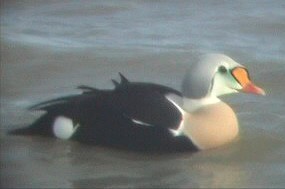
King Eider, Pett Levels, East Sussex (Photo: Ads Bowley)
The only Lesser Scaup this week were the adult drake still at Holme Pierrepont (Nottinghamshire) on 16th–20th and first-winter drakes at the Racecourse Lough (Co. Fermanagh) on 17th and (back again) at Cosmeston Lakes CP (Glamorgan) on 19th. The adult drake Ring-necked Duck remained at Foxcote Reservoir (Buckinghamshire) throughout the week and the female was on Martnaham Loch (Ayrshire) to 21st. On Tiree, two first-winter drakes remained at Loch Riaghain and an adult drake was still on Loch Bhasapol on 15th; another drake was still at Loch a'Phuill on 19th (the first-winter duo were still present on 19th) and another was seen at Garelochhead (Argyll) on 15th. In County Clare, the two drakes were still at Lough Inchiquin to 16th, while on 18th a drake was on Carrowmore Lake (Co. Mayo) and a drake with two females were still on The Gearagh (Co. Cork). Drake Ferruginous Ducks were seen at Spalford (Nottinghamshire) on 17th and at Oxford Island (Co. Armagh) to 18th. A female Ferruginous Duck was at Wistow Pool (Leicestershire) on 20th–21st. Single drake American Wigeon remained at Caerlaverock (Dumfries & Galloway) to 16th and Lower Farm GP (Berkshire) to 20th. In Cornwall, a new American Wigeon was seen at Windmill Farm on 18th. Drake Green-winged Teal remained at Minsmere (Suffolk) to 16th, at Marshside (Lancashire) to 19th, and at Capringstone Flash (Ayrshire), Tain (Highland) and Kinneil Lagoon (Forth), all to 21st. New arrivals were noted at Newport Wetlands (Gwent) on 17th–19th, Slimbridge (Gloucestershire) on 19th–20th and Buckenham Marshes (Norfolk) on 20th. In South Yorkshire on 19th, one reappeared at Edderthorpe Flash, moving to Wombwell Ings on 20th. In Ireland, a Green-winged Teal was at Carrowmore Lake on 18th. The first-winter drake Surf Scoter remained at Seaton Hole near Beer (Devon) to 18th and, also in Devon, the adult female remained off Dawlish Warren throughout the week. The female was still off Silver Strand, Galway (Co. Galway) to 19th and in Scotland a female remained in Hough Bay, Tiree (Argyll) and two drakes were off Ruddon's Point (Fife), all on 21st. The two King Eiders (a first-winter male and a female) were still in Drumcliffe Bay near Lissadell (Co. Sligo) to 18th. The second-winter drake remained off Kincraig Point (Fife) to 21st, while last week's surprise drake off the coast of East Sussex was seen again on 17th–18th, off Pett Levels, Winchelsea, Rye Harbour and Camber. On 20th, this first for East Sussex became a second for Kent when it flew west past Dungeness. Another drake was found in the far southwest this week: a drake seen in St. Austell Bay (Cornwall) on 18th was the fourth county record and the third this decade. In Dorset, the drake Hooded Merganser at Radipole Lake (Dorset) continued his residency to 21st.
The Long-billed Dowitcher was still in the docks at Dundalk (Co. Louth) to 18th and in Suffolk the Lesser Yellowlegs was back at Southwold on 19th and then at Walberswick the following day. These two birds were the only shorebirds of note this week.

Rough-legged Buzzard, Millington, East Yorkshire (Photo: Chris Gomersall)
The first-winter male Snowy Owl was still lingering on Trendrine Hill near Zennor (Cornwall) from 16th–18th (another was still on Guernsey on 15th). An adult and juvenile Rough-legged Buzzard were at Sleddale (Cleveland/North Yorkshire) on 17th–21st, while singles lingered this week at Millington (East Yorkshire), Farforth (Lincolnshire), Coveney (Cambridgeshire) and Capel Fleet, Sheppey (Kent). Also in Kent this week, a new Rough-legged Buzzard was seen near Canterbury on 18th.
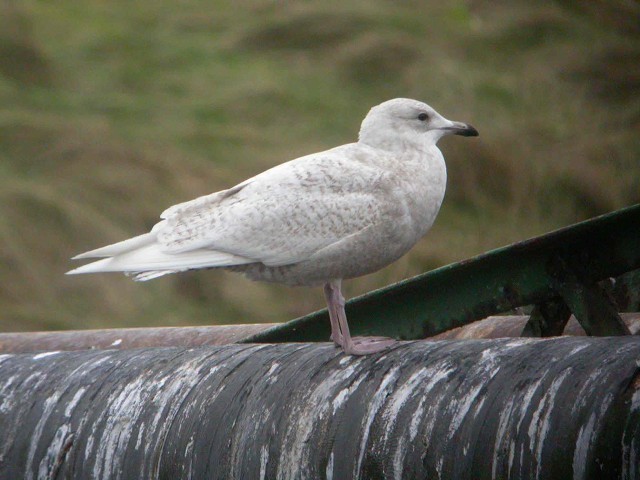
Iceland Gull, Maryport, Cumbria (Photo: Chris Hind)

Glaucous Gull, Salthouse, Norfolk (Photo: Jon Evans)

Ring-billed Gull, Westcliff-on-Sea, Essex (Photo: Dean Nicholson)
A second-winter Azorean Yellow-legged Gull was reported in fields near Polgigga (Cornwall) on 15th; it was thought to have been the bird seen in the area during autumn 2008. The adult American Herring Gull was still in and around Galway to 17th at least, and the presumed second-winter was still in Bantry Bay (Co. Cork) on 19th. Numbers of Caspian Gulls reported this week dropped to only around 25 birds (45 were seen last week), with birds noted from South Yorkshire to East Sussex. Iceland Gulls were much as last week in terms of numbers: at least 82 were seen in Britain, including at least six at Troon (Ayrshire) on 17th–19th and six at Mallaig (Highland) on 21st. In Ireland at least 30 birds were recorded, including eight juveniles at Castletown Bearhaven (Co. Cork) on 16th. The haul of Kumlien's Gulls this week climbed to at least eight birds. Young birds were seen on St. Mary's (Scilly) on 18th–21st, at Scatness (Shetland) on 17th and on Lewis (Outer Hebrides) on 21st, while a second-winter was at Collieston (Aberdeenshire) on 17th–18th, with it or another at the Ugie Estuary on 21st. In Ireland, a juvenile was seen at Sherkin Island (Co. Cork) on 16th, second-winter birds were at Galway and Clifden (Co. Galway) on 16th and 20th, a third-winter bird was at Newtownards (Co. Down) on 18th–20th, and an adult was found at Ballycotton (Co. Cork) on 20th. Numbers of Glaucous Gulls rose a little this week, with at least 55 including five at Marwick, Mainland (Orkney) on 19th–20th and four at Burrafirth, Unst (Shetland) and Barvas, Lewis (Outer Hebrides) on 19th. Only five birds were reported from Ireland. It was very much a case of "as you were" in terms of Ring-billed Gulls this week: up to eight were seen in the UK and 11 birds were noted in Ireland. One "new" bird were seen, a second-winter at Llansteffan (Carmarthenshire) on 21st, while Irish birds included three adults at Nimmo's Pier (Co. Galway) on 16th and two adults at Sandymount (Co. Dublin) on 18th. Two birds remained at Clonakilty (Co. Cork) on 15th. Over in Galway Bay, the long-staying Forster's Tern was seen at Doorus Pier near Kinvarra in Galway on 21st.

Great Grey Shrike, Lakenheath (Hockwold) Fen, Suffolk (Photo: Willie)
In Scotland, the Short-toed Lark was still being seen in stubble fields near Arbroath (Angus) to 17th. In Norfolk, the first-winter Black-bellied Dipper made a most welcome return to the Natural Surroundings reserve at Glandford on 15th, having last been seen there on 12th November last year. The bird spent only the day within the famous Cley square (only the second record ever here, the only other being in April 1984) before disappearing once more. However, on 18th the bird was relocated a few miles inland along the River Glaven at Hunworth and on 19th was heading back downstream, seen on the river at Letheringsett. In Hampshire this week, three sites hosted Great Grey Shrikes; most reliable seemed to be the bird around Beaulieu Road Station. Other wintering Great Grey Shrikes remained at Lakenheath (Suffolk), Wishmoor Bottom (Berkshire), Wykeham Forest (North Yorkshire), Dersingham Bog (Norfolk) and Glasfynydd Forest (Powys), while new birds were seen at Sandford (Dorset) on 15th and Cirencester (Gloucestershire) and the Pannel Valley (East Sussex). One was seen on Exmoor, at Exford (Somerset) on 21st. At Lakenheath two Great Grey Shrikes were seen around the RSPB car park on 20th.

Waxwing, Cheltenham, Gloucestershire (Photo: Mr G Cox)
Waxwings remained dotted around countrywide this week, with the past seven days seeing another slight decrease in numbers present. Some 150 birds were still at Ingelby Barwick (Cleveland) on 17th, 130 birds were in Dublin (Co. Dublin) on 16th, around 120 were still in Belfast (Co. Antrim) on 15th–16th and just over 100 were at Birstall (West Yorkshire) on 19th.
A Yellow-browed Warbler was seen in gardens at Chessington (London) on 17th, while Siberian Chiffchaffs were still being seen at Sandhurst (Berkshire) and Endon (Staffordshire) with another reported at Rainham Marshes (London) on 16th.

Penduline Tit, Clennon Valley Lakes, Devon (Photo: Joe Ray)
The only Penduline Tit reported this week was the male at Clennon Valley, Paignton (Devon) present to 21st. In neighbouring Cornwall, the juvenile Rose-coloured Starling was still in gardens at Newquay to 17th, while another garden dweller, the Common Rosefinch at Whitburn (Co. Durham), remained to 15th. Two Serins were seen again at Langton Herring (Dorset) on 17th and 21st.
Photo of the Week

Dusky Thrush, Belgium (Photo: Rudi Debruyne)
When people start out in bird photography, most of their attention is devoted to developing their technique. Once a basic level of competency has been achieved, the focus tends to shift to building a collection of images of a wide range of species, and then to improving the aesthetic qualities of the images. One of the key characteristics of an advanced bird photographer is that, even when faced with a rarity, they look to capture an image that's in some way special. Where most photographers are content to grab portrait-style shots when the birds 'strike a pose', the leading photographers also capture the action in between those static moments, such as flight shots, typical behaviours or interactions with other creatures. Top Belgian photographer Rudi Debruyne's action shot of a Dusky Thrush fighting with a Blackbird is a perfect example. With flawless technique, Rudi has frozen the pair fighting over fruit, millimetres above the snow-covered ground. The strong eye contact and the dynamic poses of the birds outlined against the white background make for an outstanding all-round image.

Barn Owl, undisclosed site, Lancashire (Photo: Tom Charles)

Starling, undisclosed site, Gloucestershire (Photo: Chris Grady)

Sparrowhawk, East Walton, Norfolk (Photo: Stephen Durrant)

Sanderling, Salthouse, Norfolk (Photo: Nigel Pye)

Whooper Swan, Welney WWT, Norfolk (Photo: Graham Catley)
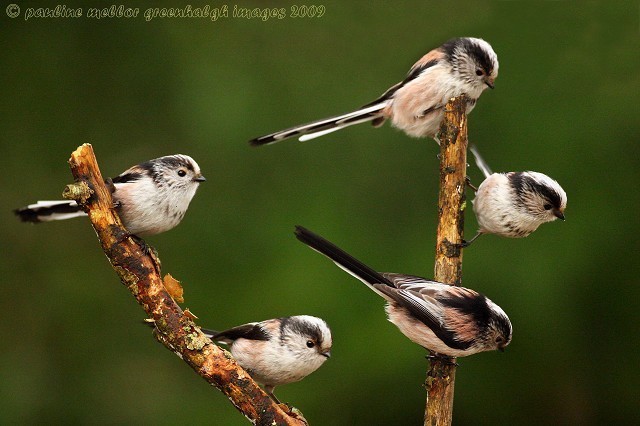
Long-tailed Tit, Hale, Cumbria (Photo: Pauline Greenhalgh)

Bar-tailed Godwit, Titchwell RSPB, Norfolk (Photo: Richard Bedford)

Goldcrest, Wigan, Manchester, Greater (Photo: David Cookson)
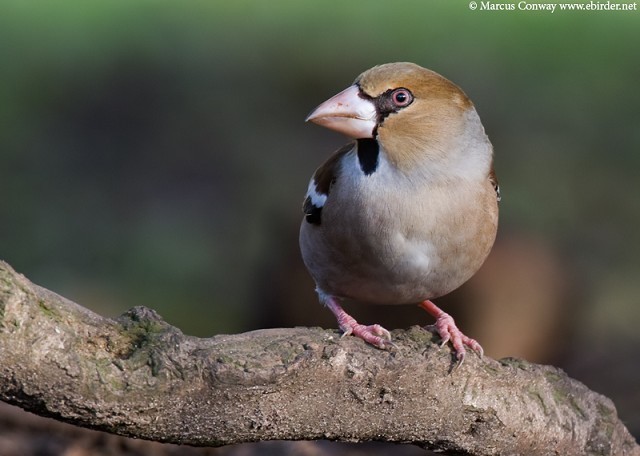
Hawfinch, Cannock Chase, Staffordshire (Photo: Marcus Conway)

Yellowhammer, Bakewell, Derbyshire (Photo: Robert Askew)

Little Egret, Meols, Cheshire (Photo: David Cookson)

Night Heron, Hythe, Kent (Photo: Garth Peacock)
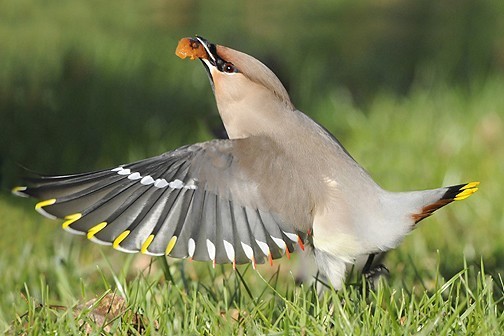
Waxwing, Rendlesham, Suffolk (Photo: Rebecca Nason)

Bearded Tit, Minsmere RSPB, Suffolk (Photo: Jon Evans)

Dipper, Leominster, Herefordshire (Photo: George Ewart)
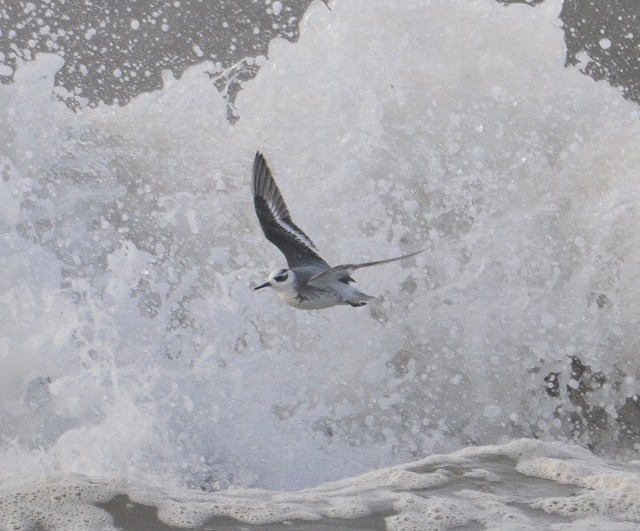
Grey Phalarope, Aberystwyth, Ceredigion (Photo: Paul_leafe)

